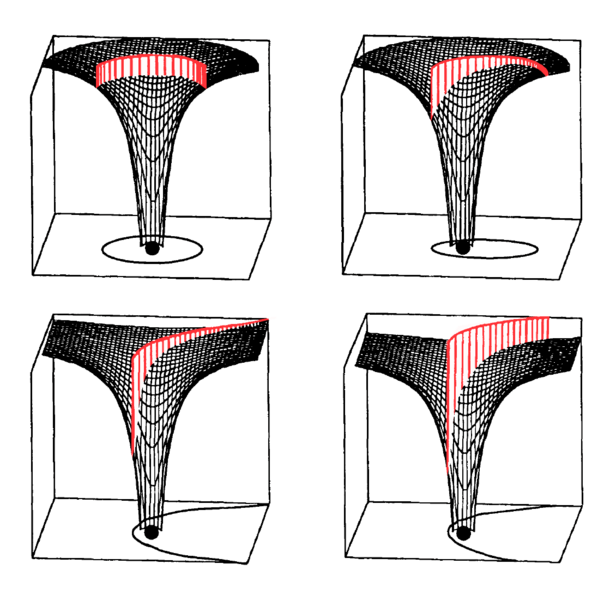Image: Gravity Wells Potential Plus Kinetic Energy - Circle-Ellipse-Parabola-Hyperbola

Description: The gravity wells are shown for four conic section trajectories. The x-axis and y-axis show spatial dimensions around the primary body. The z-axis shows energy, with the spacecraft's kinetic energy depicted in red as it extends above the gravitational potential energy of the well shown in black. The four orbits depicted (from top-left to bottom-right) are circular (with constant kinetic energy for the constant speed), elliptical (with lower kinetic energy at apogee indicating slower speed), parabolic and hyperbolic. The total energy (potential plus kinetic) for each case remains constant. The negative total energy for the circular and elliptical cases indicate that the spacecraft is bound to the primary body. The parabolic case has zero total energy. The hyperbolic case has positive total energy, on a trajectory that escapes from the primary. The part of its kinetic energy that extends above the zero total energy line corresponds to its "hyperbolic excess velocity". A spacecraft can change its energy state by performing a thrusting maneuver, where chemical potential energy is converted to kinetic energy. Chemical potential energy is not depicted in these diagrams. Note: Half of the field has been cut away for clarity. Gravity well graphic generated by HiQ. PDF image edited with GIMP.
Title: Gravity Wells Potential Plus Kinetic Energy - Circle-Ellipse-Parabola-Hyperbola
Credit: http://preview.tinyurl{dot}com/Thesis-EnergyPotentialAnalysis - Figure 3.2 on pdf pg34of64.
Author: Invent2HelpAll
Usage Terms: Creative Commons Zero, Public Domain Dedication
License: CC0
License Link: http://creativecommons.org/publicdomain/zero/1.0/deed.en
Attribution Required?: No
Image usage
The following 3 pages link to this image:

